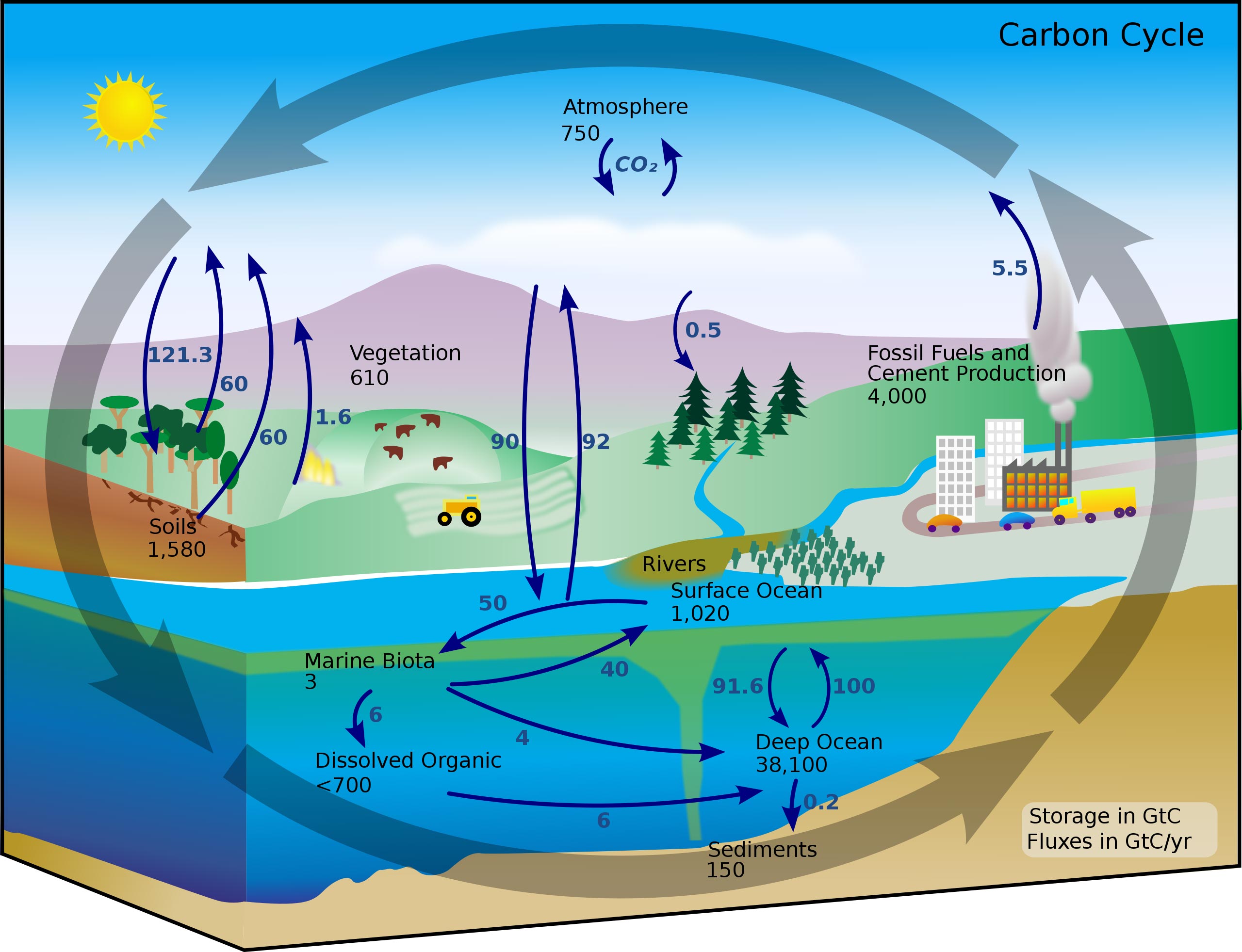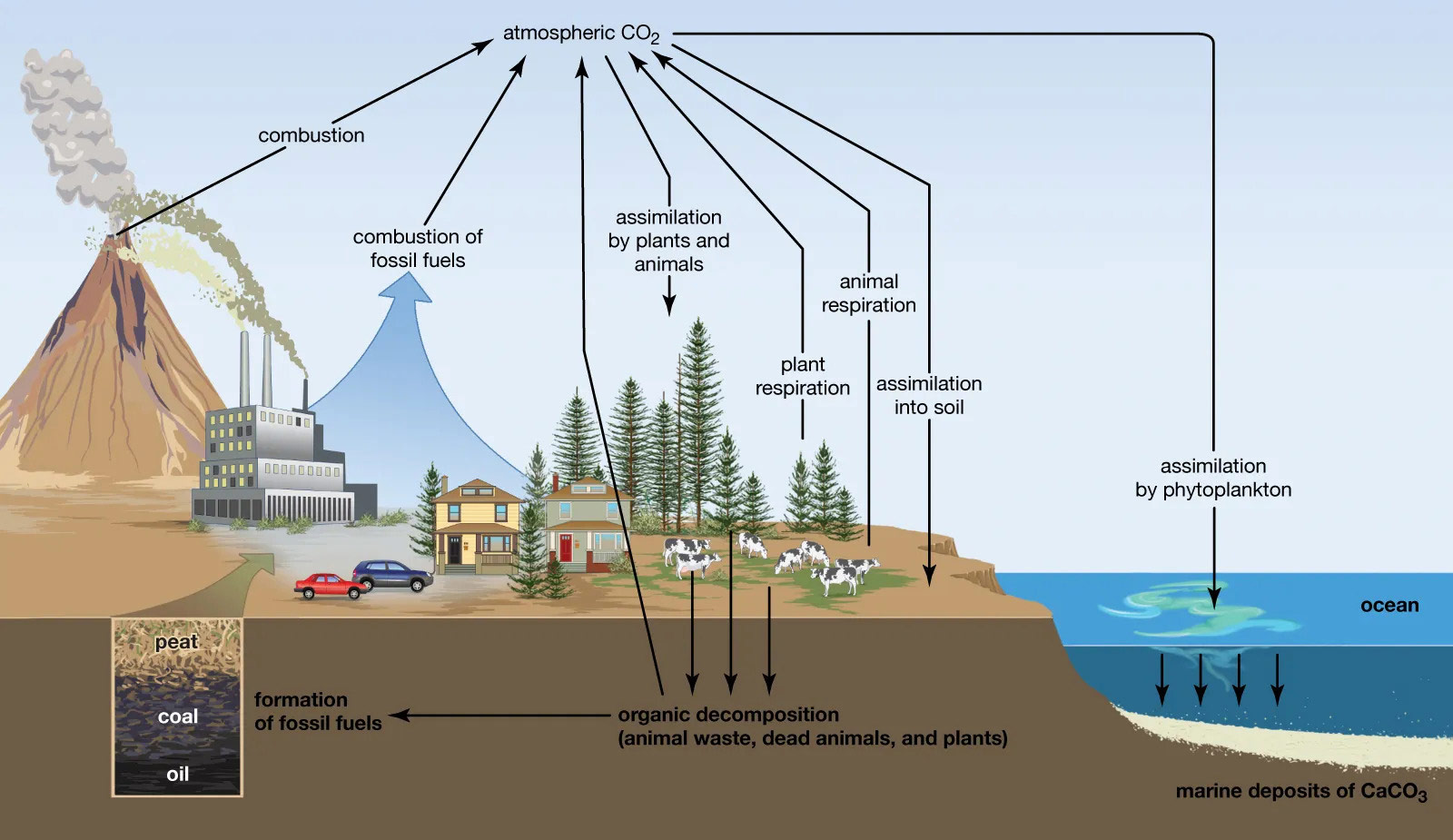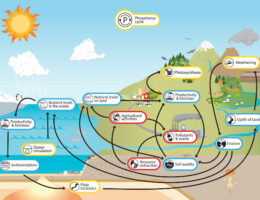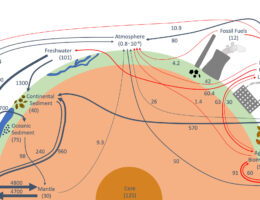The carbon cycle refers to the biogeochemical process by which carbon is cycled through the earth’s atmosphere, soils, and water systems. Here is a brief description of the labeled parts of the carbon cycle:
- Photosynthesis: Carbon dioxide (CO2) is taken up by plants during photosynthesis, which converts CO2 into organic compounds such as glucose.
- Respiration: Plants and animals release CO2 through respiration, in which organic compounds are broken down to release energy for cellular processes.
- Decomposition: Dead organic matter, such as leaves and wood, are decomposed by bacteria and fungi, which releases CO2 into the atmosphere.
- Combustion: Fossil fuels, such as coal and oil, are burned for energy production, releasing large amounts of CO2 into the atmosphere.
- Ocean uptake: The ocean absorbs CO2 from the atmosphere, which can lead to ocean acidification.
- Geological processes: Carbon can be stored in rocks and minerals, and released over long periods of time through geological processes such as volcanic activity and weathering.
- Fossil fuel formation: Over millions of years, organic matter can be transformed into fossil fuels such as coal, oil, and natural gas, which can be extracted and burned for energy.
The carbon cycle plays a crucial role in regulating the earth’s climate and supporting life on earth, but human activities have disrupted the natural balance of the carbon cycle by releasing large amounts of CO2 through activities such as burning fossil fuels and deforestation. Understanding the carbon cycle and the various processes involved can be important in managing and mitigating the impacts of human activities on the earth’s climate and ecosystems.




